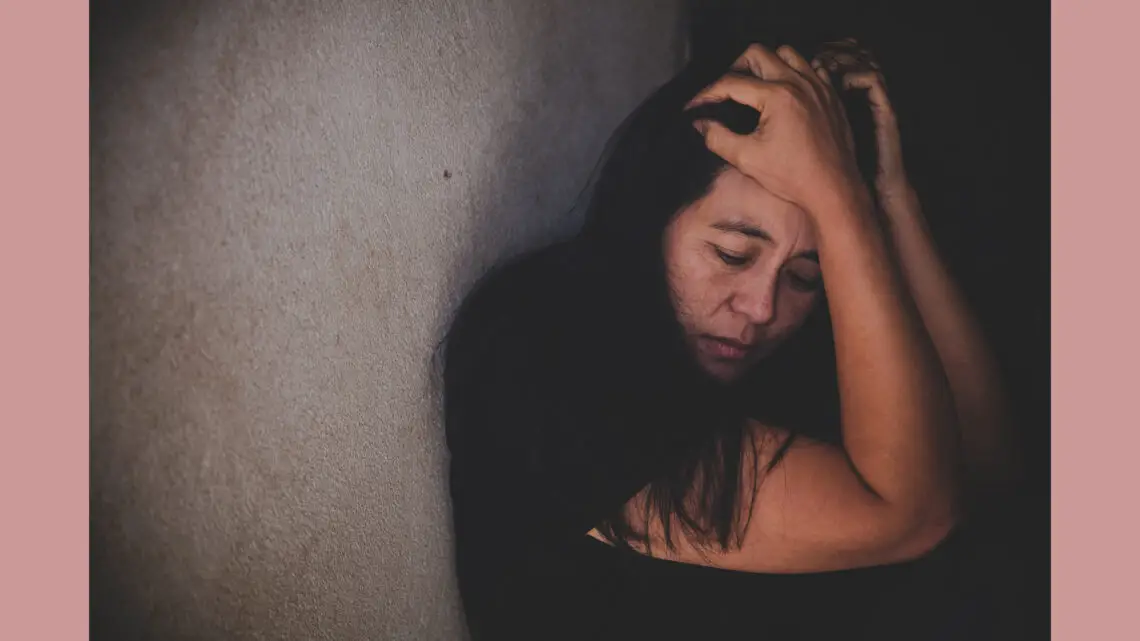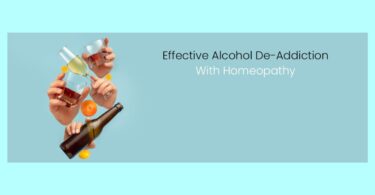Key words: Perimenopause, Menopausal transition, Menopause, Major depression, psychosocial aspects, Physiological changes.
Abstract: It has been observed that major surges of hormones are capable of triggering symptoms in women, especially during premenstrual, postpartal as well as Peri Menopausal phases.
The menopause transition is a time when women experience an increased risk for new onset depression, as well as relapse of depression. While there are intersecting symptoms between major depression and depression during menopause (Homeopathy Treatment for Menopause), differences suggest ‘perimenopausal depression’ may be a unique subtype of depression associated with characteristic symptoms.(1)
It is commonly assumed as menopause is a physiologically observable or ever-present event in humans, the signs or ‘symptoms’ surrounding this event are also general in women. It is expected that menopause is predictably attended by hot flushes, sweats, prolonged menstrual irregularities and a host of other ‘symptoms’ including depression, irritability, weight gain, insomnia and dizziness. (2)
But clinically it has been observed that Women may have severe symptoms physically or Major Depression amounting to Psychosis or on the other hand, no ailments at all but increased productivity and freedom due to cessation of menstruation.
Conclusion: Sociocultural and family factors are more important in the aetiology of mental illness in menopausal women than physiological changes. Anxiety and depression in such women do not respond to estrogen therapy, although some cases respond to antidepressants. (3) Most of the time MDD is resolved by timely interventions and family support.
In contrast to childbirth, preparation for the menopause has been neglected in the development of services, as well as in research (Notelovitz, 1988; Hunter, 1990c). But it is specific to discrete ethnic or population groups. (2) Menoupausal or perimenopausal women need more awareness and counseling as well guidance on transitions in physical, psychological as well as social aspects of one’s being.
Introduction: Menopausal transition, or ‘perimenopause (Homeopathy Treatment for Perimenopause)’, is a defined period of time beginning with the onset of irregular menstrual cycles until the last menstrual period, and is marked by fluctuations in reproductive hormones.
Biological changes:
Although menopause is linked to fluctuations in the hypothalamic and pituitary hormones that regulate the menstrual cycle, primary ovarian failure is the main event.
Premature ovarian failure is defined as menopause before the age of 40 years. It may be idiopathic or associated with toxic exposure, chromosomal abnormality, or autoimmune disorder or even Surgical.
The ovary is not able to respond to the pituitary hormones such as follicle-stimulating hormone (FSH) and luteinizing hormone (LH), and ovarian estrogen and progesterone production cease. Androgen production continues.
The primary factor influencing the transition from regular menses to the perimenopause and subsequent menopause appears to be the size of the residual primordial follicle pool.(3) to summarize its Hormone levels change as estrogen levels decrease, FSH and LH levels increase, and there are also decreases in levels of prolactin, thyroid and parathyroid hormones. It’s observed that suicidal behavior may be more common in low estrogen states. (4)(5)
Epidemiology of Major Depression in Women:
Greatest risk for women of developing depressive disorders is during their child-bearing years; several biological processes are predisposing factors such as genetically determined vulnerability, hormonal fluctuations related to various aspects of reproductive function, and sensitivity to such hormonal fluctuations in the brain systems.
A relationship between depression and premenstrual syndrome is noted due to increased prevalence of earlier depressive episodes in women with premenstrual syndrome, alongside common neurotransmitter and chronobiologic irregularities.
The relationship between menopause and depression is not clearly defined, but the perimenopausal years may be a time of increased depression for women who are at risk for depressive reappearances. (5)
Again, there are vasomotor symptoms like drenching sweats, hot flushes and cold flushes leading to sleep disturbances, which can increase reports of anxiety and depressive symptoms .
Types of Depression
Depression is the leading cause of disability in women.
- Major depressive disorderin women (21.3%) is almost twice that in men (12.7%).
- Dysthymia or Persistent Depressive Disorder is at a rate of 8% in women versus 5% in men
- stress-induced depression ‘Situational’ Depression
- Seasonal affective disorder(SAD) or photoperiod will be about 80% in women.
- Bipolar disorder (manic-depressive illness) are equal in women and men, but women are more likely to have depressive episodes,
- mixed manic episodes (with depression), and Psychotic Depression
- Cyclic affective disorders (5)(6)
- Atypical depression
Menopausal depression is an important hormone turmoil related disorder but other risk as well as contributory factors in this age group could be the hormone replacement treatment that has been reported to cause depression in women.(5)
- empty nest syndrome or children leaving home for prospects.
- Life stressors such as loss of a parent, loss of a partner.
- Caring for children and aging parents.
- Marital and career shifts that are not favorable or are very demanding.
- Illness in oneself and one’s spouse which could restrict one’s freedom.
- Internalization or repression of feelings or anger coping style,
- and guilty of not being as good as before
- Disadvantaged social status due to some prior decisions or financial status.
| Evaluation of depression in menopause
•Identification of stage of menopause •Assessment of co-occurring and overlapping menopausal and psychiatric symptoms. •An understanding of psychosocial factors unique to midlife •Appreciation of the differential diagnosis for depressive symptoms during this reproductive transition •Use of scales to aid in disentangling symptoms and distinguishing diagnoses Beck’s scale, PHQ-9 QIDS and Nice guidelines can be used. (7)(8) |
Homeopathic Management of Menopausal syndrome and MDD:
As a mental health professional one can see there’s difference between MDD and other depressive episodes. MDD is not just a thing that can be overcome by will or improvement in circumstances; but are deep rooted and miasmatic in nature. It needs psycho social interventions along with guided homoeopathic treatment.
But often the right remedy brings reaction as there’s a difference between MDD and a menopause trigged major episode. (1) Yet women tend to greatly understate their troubles so it could be disguised as some other issue feeding their guilt and depression.
‘They very often present with medically unexplained symptoms including vague aches and pains’ to quote Dr. Prabha S Chandra researcher from NIMHANS (Women’s Mental Health)
Dysthymia is probably under reported as the author herself could not figure out why she is tired and sleepy the whole day. (9) Understanding it is not procrastination and addressing the issue with verve helped in improvement at all levels. So, early on if we can elicit the symptoms of DD it could help in curing the case with necessary interventions.
Dysthymic disorder is a smoldering mood disturbance characterized by a long duration (at least two years in adults) as well as transient periods of normal mood.
Not as much symptomatically intense as major depression, DD is equally common in the community and in primary care and mental health settings. Common psychiatric comorbidities include major depression (up to 75%), anxiety disorders (up to 50%), personality disorders (20–40%), somatoform disorders (2.8%–45.2%), and substance abuse (up to 50%)
Case Examples:
Case 1
A woman of 50 years presented with acute allergic reactions, with no known triggers, at times even to the type of clothing or food she eats. Itching which increased during evening by 4pm lasted the whole night and formed colorless blebs on the skin. For brevity only relevant data has been provided.
Treatment started with Antimonium crudum 6c single dose for her oversensitive nature, which triggered severe aggravation. Other remedies prescribed sequentially like Rhus tox, Dulcamara and Pulsatilla reduced intensity of the trouble but she was in a state of constant worry about whether it would surge back. A single dose of Bacillinum 30 and Sulphur 6c have been keeping symptoms at bay whenever flare ups occur (all in water doses.)
Consultation on 10th July 2019: She told me of memory lapses and I said its menopausal symptoms alone. Then on further exploration, she got flooded with emotions. Her score on PHQ scale showed MD with suicidal ideation.
We spoke on those lines for an hour or so and she’s on the way to cure. Finally, I had prescribed Folliculinum 1M which has tagline of ‘lost in devotion’ very apt for this age group.
It’s another “must have” in our kit for internal or external hormonal influences. Now it’s almost 3 months without follow-ups but she contacted me by phone and told she’s free of allergies but wanted treatment for minor troubles.
Case 2
Female, 56 years. Her mother’s death triggered major depression and she has considerably improved and started taking interest in household routines, which was not possible even after two years of conventional treatment.
She sat in her room crying for days on end and wouldn’t speak to her children as well. She improved a lot with homoeopathy; her doubts got less and she started smiling and became affectionate towards her children.
She started doing household work again. Her prescription was increasing potencies of Pulsatilla up to 10M. But it was lost in follow-up as other supportive therapy was not provided by the family.
Case 3
Female, 61years: She was reported to be inside the room the whole day and won’t talk or eat. She got suspicious that her family members were trying to poison her. She will go out naked at times or quarrel unprovoked with filthy language. Clinching symptom was ‘she got ready for her own wedding’ of which Hyocyamus Nigra was only remedy. But Hyocyamus 30c failed to relieve her. Probably the acute inflammatory phase of brain was over. This case was a failure as symptom based prescription failed to relive the case and further inputs were not available.
(Complete above mentioned case reports for case study can be obtained on request through Email )
Homoeopathy is most suitable for hormonal imbalances and abnormal responses to natural occurrences. Menopausal syndrome treatment is very responsive and MDD is amenable to individualistic treatment with constitutional therapy.
Yet we can have a few remedies relieving minor ailments which play havoc on a woman’s mental health. Seasonal care is essential as it goes unnoticed and triggers much guilt for being unproductive “for no reason”.
Even hormonal imbalances and conditions like Type II Diabetes or hypertention show undue fluctuations without contributory factors. Time and again Iris versicolor has helped in perimenopuasal women with high blood pressure as well as excessive giddiness\vertigo and changes in appetite.
Natrum salicylatum in any potency has restored menstrual flow in early menopause. It is a valuable addition to our armamentarium alongside all other Natrum group remedies. I mentioned only these two remedies as they are very essential phase remedies to be studied in regard to menopause.
Migraines have been on the rise after cessation of menses which needs specific remedies. Evidence suggests that migraine activity is influenced by hormonal factors, and particularly by estrogen levels. (10)
It could be a masked depressive episode or triggered by guilt, stress and other factors. Sequential prescription is required many a times to tackle the menopausal menace. Clinically migraines respond very well to constitutional therapy and nothing else, curing associate troubles alongside.
Co morbid conditions are also contributory for MDD, so they need to be addressed, like cardiovascular conditions, musculoskeletal disorders (especially spondylitis and sciatica), digestive system disorders and so on which are all dependent or flag posts of MDD.
The most important thing to do after we administer the simillimum is supportive psychotherapy or at times cognitive behavior therapy or other proper counseling to cure the major depression (unlike sub-clinical depression or other episodes which improve soon after the right remedy or just by counseling.)
In order to successfully navigate the menopausal transition, a woman’s attitude towards the changes will determine her experience. Experts say these are certainly influenced by the cultural norms of her origins and present environment.
Woman in transition who have been very hard working till now who are suddenly staring at an empty nest with abundant free time, never thought of carving out a niche for themselves.
A supportive group with a purpose or peer group, a lending hand (social support) good listening on the part of the physician all are essentials with the simillimum to cure or to prevent MDD in menopause.
Acknowledgements: Menopause and Mental Health by Dr Vandita Shanbhag
Post Doctoral Fellow in Women’s Mental Health NIMHANS
References
1.Development and validation of a new rating scale for perimenopausal depression—the Meno-D Jayashri Kulkarni, doi: 10.1038/s41398-018-0172-0
2.The evolution of menopausal symptomshttps://doi.org/10.1016/S0950-351X(05)80268-X
3.Ballinger, C. (1990). Psychiatric Aspects of the Menopause. British Journal of Psychiatry, 156(6), 773-787. doi:10.1192/bjp.156.6.773
4.Predictors of menopausal symptoms: psychosocial aspects https://doi.org/10.1016/S0950-351X(05)80269-1
5.doi: 10.4103/0019-5545.161483 Postmenopausal syndrome
6.The biological basis of the menopause https://doi.org/10.1016/S0950-351X(05)80267-8
7.Depression in women https://doi.org/10.1016/j.metabol.2005.01.014
8.MOOD DISORDERS AND MENOPAUSE https://doi.org/10.1016/S0889-8529(05)70247-4
9.Dysthymic Disorder Forlorn and Overlooked ? Randy A. Sansone, MD and Lori A. Sansone, MD
PMID: 19724735
10.Migraine in menopausal women: a systematic review
International Journal of Women’s Health 2015:7 773–782




